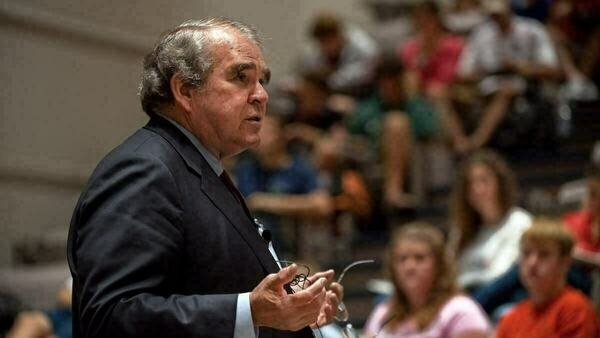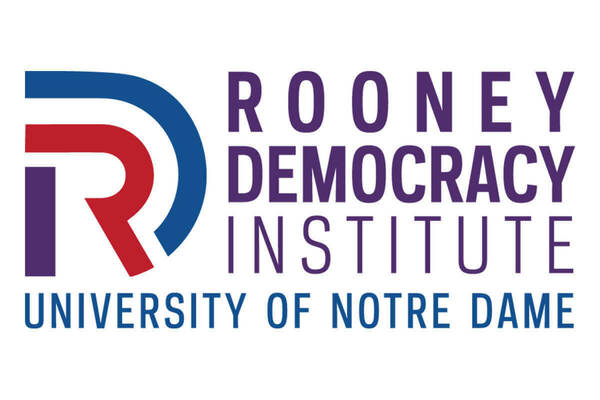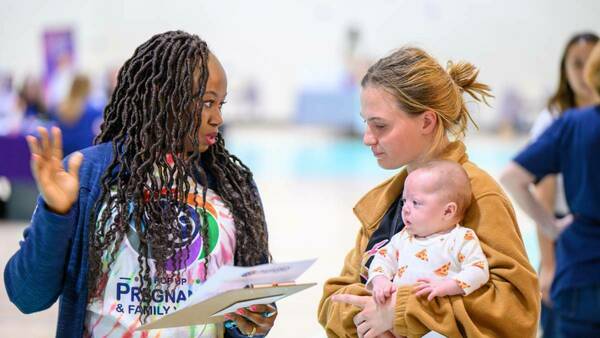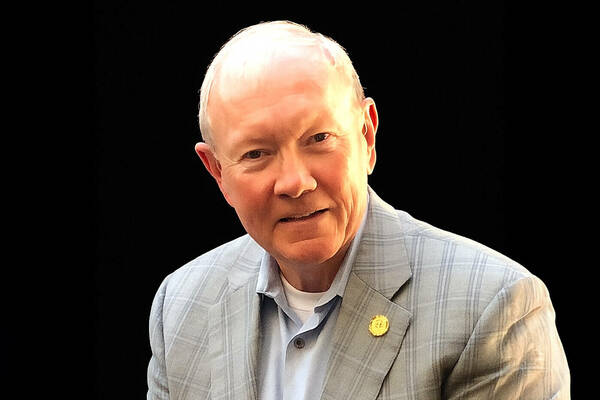Virtual learning detrimental to school attendance, especially in districts with higher poverty rates, study finds
Since the COVID-19 pandemic, rates of chronic absenteeism have nearly doubled across the nation for students in kindergarten through grade 12.
This increase was tied to the mode of instruction during the early years of the pandemic. In particular, schools that employed virtual learning as the primary teaching mode during the 2020-21 school year experienced a greater increase in chronic absenteeism in the following year. That increase was significantly greater in school districts with higher levels of poverty, according to new research from the University of Notre Dame.
William Evans, the Keough-Hesburgh Professor of Economics and co-founder of Notre Dame’s Wilson Sheehan Lab for Economic Opportunities, co-authored the study with current undergraduate student Kathryn Muchnick and 2024 graduate Olivia Rosenlund. Their work was recently published in the scientific journal JAMA Network Open.
The study analyzed data for two years from more than 11,000 school districts across the United States and found that chronic absenteeism rates increased from 16 percent in 2018-19 to nearly 30 percent in the 2021-22 school year. Students whose schools had full virtual instruction during the pandemic had chronic absenteeism rates that were nearly 7 percentage points higher than those schools that were fully in person, according to the research.
A student is considered chronically absent if he or she misses at least 10 percent of the instructional days in any given school year. That equates to more than three weeks of absences during a 180-day academic year.
As reported in the study, chronic absenteeism has been shown to lead to lower test scores, reduced social and educational interactions, lower rates of high school graduation and increased substance use. The increase in chronic absenteeism began to occur as public schools in the U.S. were attempting to return to pre-pandemic modes of in-person teaching.
Previous studies have indicated that moving away from in-person instruction during the 2020-21 school year to online teaching methods reduced student achievement and educational development, adversely affected children’s mental well-being and decreased school enrollment.

“We’ve learned a lot from the pandemic,” Evans said, “and a lot of work has gone into researching what effects virtual learning has had on students. It’s really difficult when you disrupt their educational experience by going remote.”
Both of Evans’ co-authors were high school students during the pandemic, giving them a uniquely personal perspective on the study’s results. Rosenlund said that when she entered the end of her senior year with fully virtual classes, she and her classmates “definitely had lower motivation to learn during that time compared to when class was fully in person.”
Muchnick added, “The shift in student motivation after online learning [back to in-person] was palpable.”
The research also indicated that chronic absenteeism rates hit at-risk students and school districts with the highest levels of poverty the hardest. Those school districts saw chronic absenteeism soar more than 10 percentage points higher among students who had participated in fully remote instruction, versus in-person learning.
“There is growing evidence that those in the most precarious situations were the ones that were really hurt the most by virtual instruction,” Evans said. “The districts with higher levels of poverty had higher rates of chronic absenteeism already, and they were much more aggressive at using virtual learning during COVID. So you took a vulnerable population, used this method of delivery for educational instruction, and the outcomes for these children are substantially worse.”
Households with lower incomes or fewer resources were less likely to have reliable or high-speed internet service and had far less access to quality computers or technology, making for a less-than-ideal virtual learning environment. “It was pretty detrimental for those kids who were most at risk in the first place,” Evans added, “and now they’ve been pushed further behind as a result of these policies.”
Although the study did not specifically explore the reasons behind the drop in school attendance, it did offer several possible explanations. First, roughly 10 to 20 percent of students were experiencing post-COVID-19 symptoms and may have elected not to go to school for medical and health reasons. Second, there was a corresponding increase in teacher absences and substitute teacher shortages that made students less compelled to go to school. Third, a greater occurrence of mental health issues, which is often coupled with an increased preoccupation with social media, may have kept students at home. Finally, following the pandemic, parents appear to be more willing to allow their children to miss school for a variety of reasons.
With the worst of the pandemic behind us, many parents, school teachers and administrators believe that virtual instruction is here to stay and will continue as a major component of K-12 education, potentially being used as a substitute for in-person teaching under certain circumstances, such as snow days.
“It’s going to be really difficult to put the genie back in the bottle in this context,” Evans said.
Finding a balance of how to use virtual learning in a way that does not negatively impact the students’ overall educational experience will be crucial, according to the researchers.
Rosenlund added, “It’s disheartening that students are still suffering from the negative effects of online learning. I hope that we can consider its implications more carefully going forward.”
The researchers suggest that educators and policymakers examine the evidence when establishing policies and practices related to online learning, particularly for those communities supporting at-risk students, in order to achieve equitable outcomes for all students.
“I think we need to take a more holistic approach in thinking about how to deal with these pandemics in the future,” Evans said.
Contact: Tracy DeStazio, associate director of media relations, 574-631-9958 or tdestazi@nd.edu
Latest ND NewsWire
- Notre Dame’s Kellogg Institute partners with Vanderbilt University to launch 2025-26 democracy surveyThe University of Notre Dame’s Kellogg Institute for International Studies and Vanderbilt University’s Center for Global Democracy are partnering to advance one of the world’s leading surveys on attitudes toward democracy. Starting in October, the Center for Global Democracy, with support from the Kellogg Institute, will conduct the 2025-26 round of the AmericasBarometer, which tracks public opinion on democracy in 20 countries across the Americas.
- Notre Dame to award 2026 Evangelium Vitae Medal to Wm. David Solomon, founding director of the de Nicola Center for Ethics and CultureThe de Nicola Center for Ethics and Culture at the University of Notre Dame announced that the late Wm. David Solomon, associate professor of philosophy emeritus and founding director of the center, has been named the recipient of the 15th annual Notre Dame Evangelium Vitae Medal, the nation’s most important award for heroes of the pro-life movement. The medal will be presented to Solomon’s family at a special Mass and dinner May 1, 2026, at Notre Dame.
- Francis and Kathleen Rooney make transformative gift for Notre Dame institute focused on democracy research and educationFrancis and Kathleen Rooney of Washington, D.C., and Naples, Florida, have made a gift to the University of Notre Dame to endow an institute in the College of Arts & Letters committed to the preservation of American democracy through research, teaching and public engagement. The Rooney Democracy Institute, formerly known as the Rooney Center for the Study of American Democracy, aims to advance Notre Dame’s role as a national and global leader in democracy scholarship and as a convener of bipartisan conversations about the future of democracy.
- Researchers deconstruct chikungunya outbreaks to improve prediction and vaccine developmentThe symptoms come on quickly — acute fever, followed by debilitating joint pain that can last for months. Though rarely fatal, the chikungunya virus, a mosquito-borne illness, can be particularly severe for high-risk individuals, including newborns and older adults. While the virus is common…
- Eck Institute investigator to strengthen postpartum care for Indiana mothersYenupini Joyce Adams, associate professor of the practice and maternal health lead for the Eck Institute for Global Health at the University of Notre Dame, is partnering with Beacon Health System to pilot a new, first-of-its-kind postpartum care model in the South Bend-Elkhart community.
- Gen. Martin Dempsey to speak at Notre Dame Forum event on ‘Hope, Global Stability and the Role of the United States’Gen. Martin Dempsey, the retired 18th chairman of the Joint Chiefs of Staff, will join University President Rev. Robert A. Dowd, C.S.C., for a fireside chat at 4 p.m. Friday (Oct. 10), as part of the 2025-26 Notre Dame Forum. The discussion, titled “Hope, Global Stability and the Role of the United States,” is part of the exploration of this year’s Notre Dame Forum theme, “Cultivating Hope.” It will take place in Rooms 215/216 of McKenna Hall and will also be livestreamed. The event is free and open to the public.













